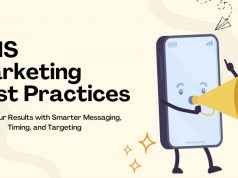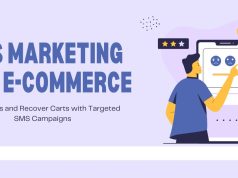Getting your SMS marketing timing right can make the difference between a campaign that converts and one that gets ignored. While SMS boasts impressive open rates of over 90%, sending messages at the wrong time can lead to frustrated customers and higher unsubscribe rates. Understanding when your audience is most receptive to text messages is crucial for maximizing engagement and driving results.
This guide explores the optimal timing strategies for SMS marketing campaigns, backed by research and real-world data to help you reach your customers when they’re most likely to take action.
The Science Behind SMS Timing
Research consistently shows that timing directly impacts SMS marketing performance. Unlike email, which people check at their convenience, text messages demand immediate attention. This immediacy makes timing even more critical—send a message at the wrong moment, and you risk interrupting important activities or personal time.
Studies reveal that SMS messages sent during optimal hours achieve 25-30% higher engagement rates compared to those sent during off-peak times. The key lies in understanding your audience’s daily routines and aligning your messaging schedule accordingly.
Mobile usage patterns provide valuable insights into optimal sending times. Most people check their phones frequently throughout the day, but their receptiveness to promotional messages varies significantly based on their activities and mindset.
Best Days of the Week for SMS Marketing

Weekdays vs. Weekends
Weekdays generally outperform weekends for most SMS marketing campaigns. Tuesday through Thursday typically show the highest engagement rates, with Tuesday often emerging as the top performer across various industries.
Monday engagement can be lower as people focus on starting their work week, while Friday afternoons may see reduced response rates as people shift their attention to weekend plans.
Weekend performance varies significantly by industry. Restaurants, entertainment venues, and retail businesses often see strong weekend engagement, while B2B companies typically experience lower response rates on Saturday and Sunday.
Industry-Specific Day Preferences
Different industries see varying performance patterns throughout the week:
Retail and E-commerce: Tuesday and Wednesday perform best, with Thursday showing strong results for flash sales and limited-time offers.
Restaurants: Friday and Saturday work well for weekend promotions, while Tuesday through Thursday are optimal for mid-week specials.
Healthcare: Monday through Wednesday typically show higher engagement for appointment reminders and health tips.
Financial Services: Tuesday through Thursday generally perform best, avoiding Monday stress and Friday distractions.
Optimal Hours for SMS Marketing
Morning Messages (8 AM – 11 AM)
Early morning messages work well for certain types of content, particularly appointment reminders, daily deals, and time-sensitive offers. However, avoid sending promotional messages too early—most people don’t appreciate marketing messages before 8 AM.
The 10 AM to 11 AM window often performs well for promotional content, as people have settled into their day but aren’t yet deep in work tasks or personal commitments.
Midday Messaging (12 PM – 2 PM)
Lunch hours present an excellent opportunity for restaurant promotions, quick deals, and flash sales. People often check their phones during lunch breaks, making this window ideal for messages that require immediate action.
Retail promotions and special offers also perform well during this timeframe, as people have mental space to consider purchases.
Afternoon Engagement (3 PM – 5 PM)
Late afternoon messages can be effective for end-of-day promotions and evening event reminders. This window works particularly well for restaurants promoting dinner specials or entertainment venues advertising evening events.
B2B messages should generally avoid late afternoon on Fridays, as engagement typically drops significantly.
Evening Opportunities (6 PM – 8 PM)
Evening hours often show strong engagement for retail promotions, as people have time to browse and shop. This window works well for messages that don’t require immediate action but encourage evening or next-day purchases.
Avoid sending messages after 8 PM unless they’re transactional or your audience has specifically opted in for evening communications.
Time Zone Considerations

Multi-Time Zone Strategies
If your customer base spans multiple time zones, develop a segmented approach that sends messages at optimal local times rather than using a single send time for all subscribers.
Most SMS marketing platforms allow you to schedule messages based on recipients’ time zones, ensuring consistent delivery timing regardless of geographic location.
Regional Preferences
Consider regional lifestyle differences when planning send times. Urban audiences might respond better to early morning messages due to commute patterns, while rural audiences might prefer later morning or early afternoon timing.
Seasonal changes can also affect optimal timing, with daylight saving time transitions requiring schedule adjustments.
Timing by Message Type
Promotional Messages
Sales announcements and promotional offers typically perform best during mid-morning (10 AM – 11 AM) and early evening (6 PM – 8 PM) hours on weekdays. These windows provide the right balance of attention and receptiveness.
Flash sales and limited-time offers can benefit from strategic timing that creates urgency—consider sending these during peak mobile usage hours when people are most likely to see and act on time-sensitive deals.
Transactional Messages
Order confirmations, shipping notifications, and appointment reminders should be sent immediately when relevant rather than following promotional timing guidelines. These messages provide expected information that customers want to receive promptly.
However, non-urgent transactional messages like billing reminders or account updates should still follow general timing best practices to maintain positive customer relationships.
Event and Appointment Reminders
Send appointment reminders during business hours when recipients can easily reschedule if needed. A 24-hour advance reminder around 10 AM typically works well, followed by a same-day reminder 2-3 hours before the appointment.
Event reminders benefit from strategic timing based on the event type—send dinner event reminders during afternoon hours, while morning event reminders work best when sent the evening before.
Frequency and Timing Balance
Message Spacing
Avoid sending multiple messages within short timeframes, even if individual messages are timed optimally. Space promotional messages at least 2-3 hours apart to prevent overwhelming subscribers.
Plan your messaging calendar to distribute communications throughout the week rather than clustering them on specific days.
Seasonal Timing Adjustments
Adjust your timing strategy based on seasonal patterns and holidays. Back-to-school seasons might shift optimal morning times earlier, while holiday seasons often see extended evening engagement windows.
Summer schedules may require different timing than winter patterns, particularly for businesses serving families or educational markets.
Testing and Optimization
A/B Testing Send Times
Test different send times with small segments of your audience before rolling out campaigns to your entire list. Compare engagement rates across different time slots to identify your audience’s preferences.
Track not just open rates but also click-through rates and conversions to understand which times drive the most valuable actions.
Continuous Monitoring
Regularly review your SMS analytics to identify changing patterns in audience behavior. What works well initially might shift over time as customer habits evolve.
Monitor unsubscribe rates after campaigns sent at different times—higher opt-out rates might indicate poor timing choices.
Industry-Specific Timing Strategies
Retail and E-commerce
Online retailers often find success with early evening messages (6 PM – 8 PM) when customers are relaxing and browsing. Weekend afternoon messages can also work well for fashion and lifestyle brands.
Consider payday timing for your target demographic—messages sent shortly after typical paydays might see improved conversion rates.
Restaurants and Food Service
Timing food promotions around meal times shows strong results. Lunch promotions work well between 11 AM and 1 PM, while dinner specials benefit from 4 PM – 6 PM timing.
Happy hour promotions typically perform best when sent 2-3 hours before the event, giving people time to plan their evening.
Healthcare and Professional Services
Medical practices and professional services should focus on business hours for most communications. Mid-morning messages (10 AM – 11 AM) often work well for appointment reminders and health tips.
Avoid sending non-urgent healthcare messages during typical meal times or very early/late hours.
Avoiding Common Timing Mistakes
Respecting Personal Time
Never send promotional messages before 8 AM or after 9 PM unless customers have specifically opted in for these times. Respecting personal boundaries helps maintain positive relationships and reduces unsubscribe rates.
Be particularly careful with weekend messaging timing—people often sleep later and have different daily rhythms.
Holiday and Special Event Considerations
Adjust your timing strategy around major holidays, local events, and cultural observances. Research your audience’s likely schedule disruptions and plan accordingly.
Some holidays create opportunities for extended engagement windows, while others require more conservative timing approaches.
Crisis and Emergency Communication
During emergencies or crisis situations, normal timing rules may not apply. However, ensure your urgent communications are truly necessary and valuable to recipients.
Maximizing Your SMS Marketing Success
Understanding when to send SMS marketing messages is just one piece of the puzzle. The most successful campaigns combine optimal timing with compelling content, clear calls-to-action, and respect for subscriber preferences.
Start by analyzing your current campaign performance data to identify patterns in your audience’s behavior. Use A/B testing to refine your timing strategy continuously, and remember that optimal timing can vary significantly based on your specific audience and industry.
The key to SMS marketing success lies in treating timing as an ongoing optimization opportunity rather than a one-time decision. By monitoring performance, testing new approaches, and adapting to changing customer behaviors, you can ensure your messages reach subscribers when they’re most receptive and ready to take action.
Remember that great timing paired with valuable content creates the foundation for SMS marketing campaigns that not only achieve high engagement rates but also build lasting customer relationships and drive meaningful business results.
Knowing when to send SMS marketing messages for maximum impact can significantly enhance engagement, especially when paired with tools like a stock market news app that keeps your audience informed through timely, relevant updates.









